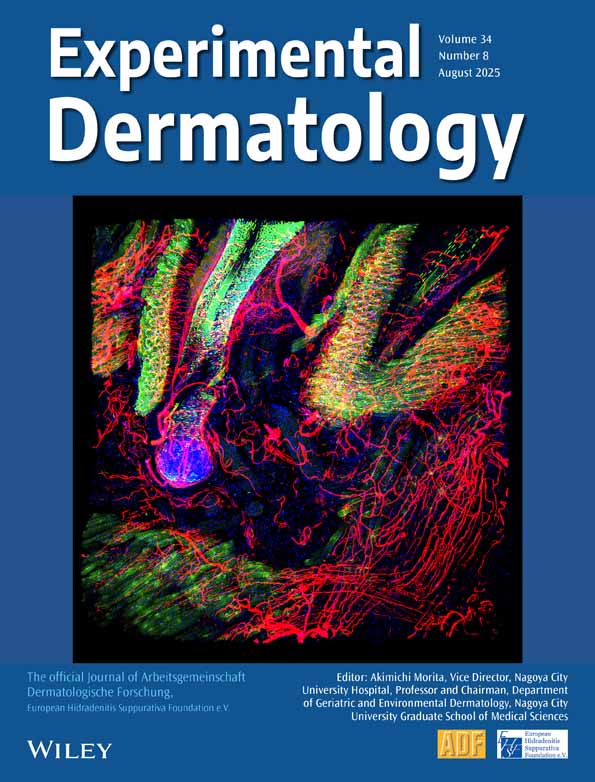Topical β-carotene is converted to retinyl esters in human skin ex vivo and mouse skin in vivo
Abstract
Abstract: Human epidermis contains endogenous retinoids (retinol and retinyl esters) and carotenoids (mostly β-carotene). Previous studies have shown that the enzymes involved in retinoid metabolism are present in human epidermis. There is still a controversy about the presence in the skin of the enzymes able to convert β-carotene into vitamin A (retinol), although a recent study demonstrated the conversion of β-carotene into retinol in human cultured epidermal cells. In this study, we addressed the question of the possible bioconversion of topical β-carotene into vitamin A or derivatives by human and mouse skin. Surgically excised human abdominal skin was mounted on Franz perfusion chambers to assess the cutaneous penetration of topical β-carotene as well as its metabolism, after a 24-h incubation period, whereas hairless mice received topical β-carotene 24 h before assaying epidermal β-carotene and retinoid concentrations. Epidermal retinoid and β-carotene concentrations were determined by high-pressure liquid chromatography. Topical β-carotene penetrated well into human and mouse epidermis and induced a 10-fold (human) and a threefold (mouse) increase of epidermal retinyl esters, which demonstrates that topical β-carotene is converted into retinyl esters by human and mouse epidermis and thus appears as a precursor of epidermal vitamin A.




